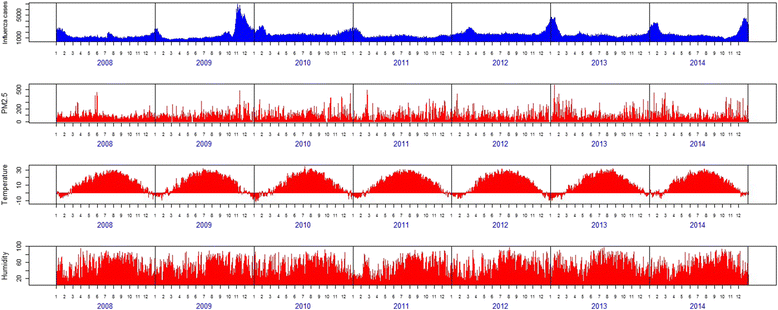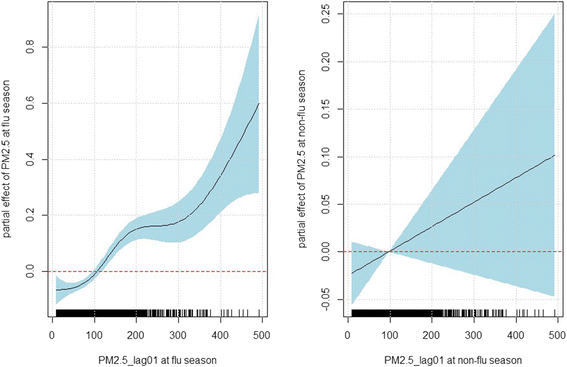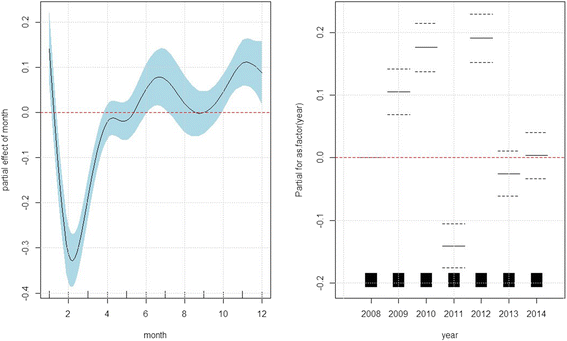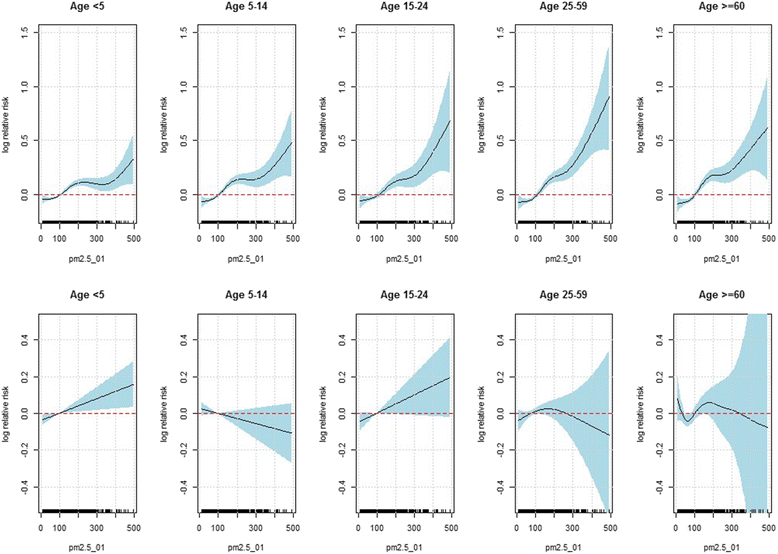Impact of ambient fine particulate matter (PM2.5) exposure on the risk of influenza-like-illness: a time-series analysis in Beijing, China
- PMID: 26864833
- PMCID: PMC4750357
- DOI: 10.1186/s12940-016-0115-2
Impact of ambient fine particulate matter (PM2.5) exposure on the risk of influenza-like-illness: a time-series analysis in Beijing, China
Abstract
Background: Air pollution in Beijing, especially PM2.5, has received increasing attention in the past years. Although exposure to PM2.5 has been linked to many health issues, few studies have quantified the impact of PM2.5 on the risk of influenza-like illness (ILI). The aim of our study is to investigate the association between daily PM2.5 and ILI risk in Beijing, by means of a generalized additive model.
Methods: Daily PM2.5, meteorological factors, and influenza-like illness (ILI) counts during January 1, 2008 to December 31, 2014 were retrieved. An inverse Gaussian generalized additive model with log link function was used to flexibly model the nonlinear relationship between the PM2.5 (single- and multiday lagged exposure) and ILI risk, adjusted for the weather conditions, seasonal and year trends. We also assessed if the effect of PM2.5 differs during flu season versus non-flu season by including the interaction term between PM2.5 and flu season in the model. Furthermore, a stratified analysis by age groups was conducted to investigate how the effect of PM2.5 differs across age groups.
Results: Our findings suggested a strong positive relationships between PM2.5 and ILI risk at the flu season (October-April) (p-value < 0.001), after adjusting for the effects of ambient daily temperature and humidity, month and year; whereas no significant association was identified at the non-flu season (May-September) (p-value = 0.174). A short term delayed effect of PM2.5 was also identified with 2-day moving average (current day to the previous day) of PM2.5 yielding the best predictive power. Furthermore, PM2.5 was strongly associated with ILI risk across all age groups (p-value < 0.001) at the flu season, but the effect was the most pronounced among adults (age 25-59), followed by young adults (age 15-24), school children (age 5-14) and the elderly (age 60+) and the effect of PM2.5 was the least pronounced for children under 5 years of age (age < 5).
Conclusions: Ambient PM2.5 concentrations were significantly associated with ILI risk in Beijing at the flu season and the effect of PM2.5 differed across age groups, in Beijing, China.
Figures






References
Publication types
MeSH terms
Substances
LinkOut - more resources
Full Text Sources
Other Literature Sources
Medical
Miscellaneous

